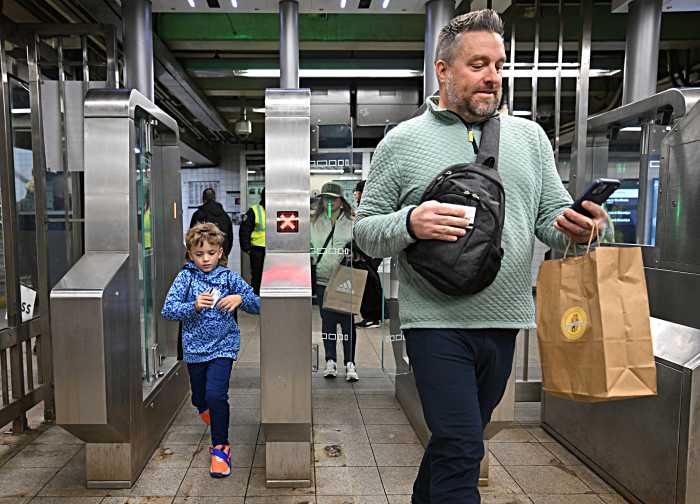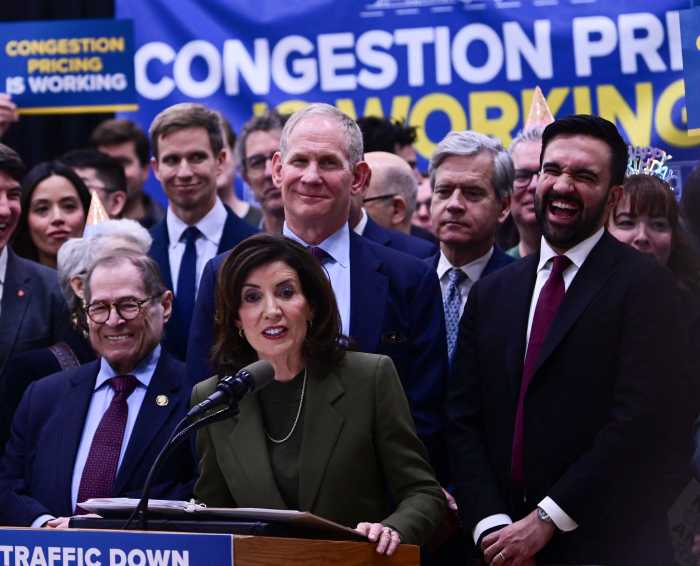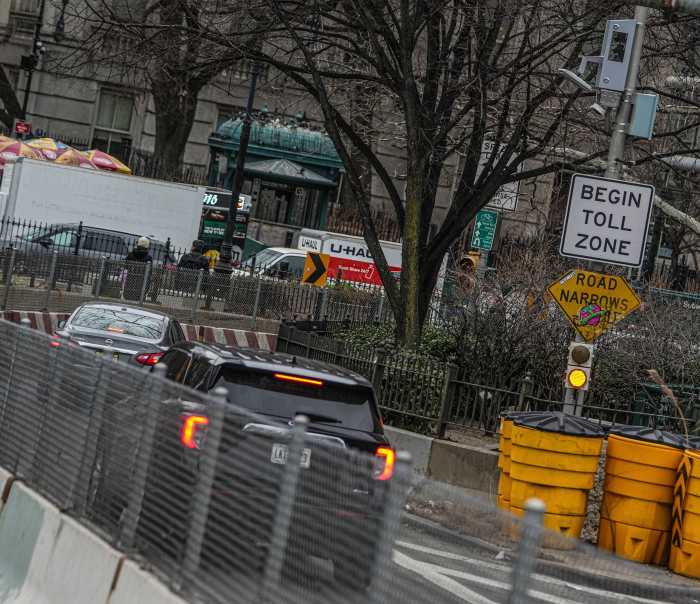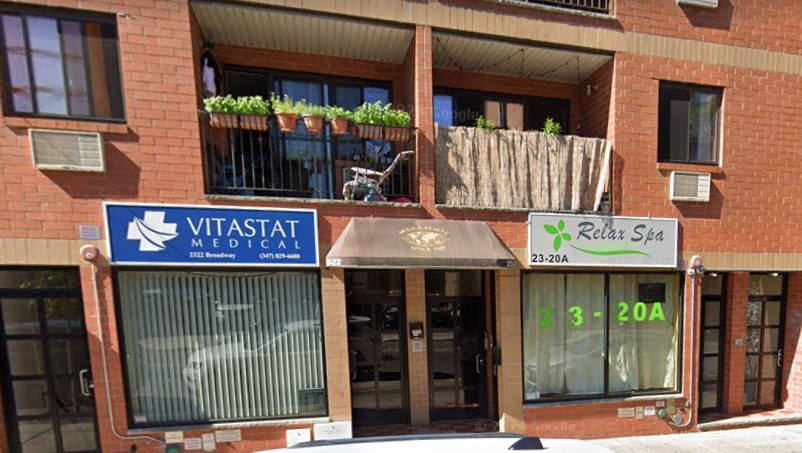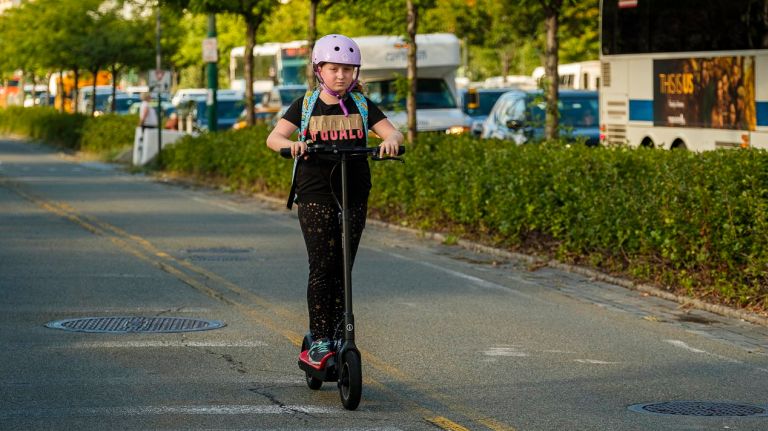
In a car-clogged city, New Yorkers are looking to go big with smaller electric transit.
Lawmakers and transit advocates are warmly welcoming electric bikes, mopeds and scooters as a way of the future for commuting in New York City — targeting environmentally friendly ways to get around with a much smaller footprint than cars and potentially more functionality than traditional pedal bikes.
City Council members including Ydanis Rodriguez, of Manhattan, and Rafael Espinal, of Brooklyn, are now leading the charge to legalize and launch an e-scooter sharing service for the city, following the path paved by other cities around the country.
“People are leaving behind the concept that the car is a symbol of progress, and people are now thinking of friendly environmental modes of transportation,” said Rodriguez, who chairs the Council’s Transportation Committee.
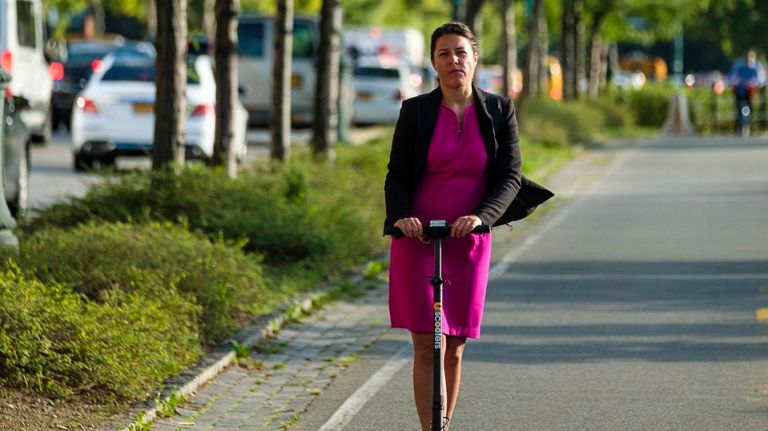
Rodriguez said he got the idea to bring low-speed electric scooters to New York City after riding them during a trip to Israel four years ago.
E-scooter legislation is being crafted as commuters get familiar with pedal-assist e-bike sharing services launched over the summer. Riders have rushed down Bay Street on Staten Island and across the Rockaway Boardwalk without breaking a sweat thanks to the small, battery-powered motors that provide an extra kick when the pedals are in motion.
Citi Bike has joined in, too, and is adding roughly 1,000 e-bikes to its fleet in advance of the L train shutdown next April.
In a subway-centric city, officials believe these services can help riders avoid delays or fill the gaps where the subways don’t go.
At the end of July, the electric moped company Revel launched a moped-sharing service, dropping 68 of its vehicles in the Greenpoint, Bushwick and Williamsburg areas of Brooklyn. In the first six weeks of service, Revel signed up 1,080 riders who had completed 5,288 rides over the course of 16,970 miles between Brooklyn and Queens. The average ride is 36 minutes long and covers about 3.4 miles, according to Revel.
“We’re excited about it, plain and simple, to be hitting these numbers in what is a 4.5-square mile (service area),” said Paul Suhey, COO and co-founder of Revel Transit. “And we’re hearing from people that they’re using Revel to replace trips on ride-share services like Uber or Lyft.”
It’s not yet clear what kind of impact these greener alternatives have on car dependency, but Sarah Kaufman, the associate director at the NYU Rudin Center for Transportation, believes e-scooters from popular companies like Bird and Lime can make a meaningful dent in car trips. Bird loaned Kaufman a scooter to test out around the city, though she said she mostly uses it recreationally due to a lack of safe street infrastructure to support the vehicle.
“In general, I believe the more modes we have for New Yorkers, the better,” Kaufman said. “This isn’t a sleeper town; people don’t just commute from home to work and back again. People go out, they take different trip types. Sometimes they’re going shopping and need a taxi, or they’re going to the gym and will ride a scooter. They’re taking multiple different trips in one afternoon.”
While some New Yorkers are already using e-scooters, the vehicle is technically illegal and could carry a $500 fine and an impounding. And while Councilman Rodriguez believes the City Council has the authority to legalize the scooters, the de Blasio administration believes it’s a matter of state law.
“It’s far from clear under state law that e-scooters are legal,” said Raul Contreras, a mayoral spokesman, in a statement. “But we are always looking to expand transportation options for New Yorkers. We will closely review any proposed legislation with an eye toward keeping people safe on our crowded streets and sidewalks.”
Scooter companies have been aggressively pitching their services to City Council members and Bird, headquartered in Santa Monica, California, has held several events with local lawmakers.
“A lot of my colleagues have been riding them in their districts and in the halls of 250 Broadway,” said Council Speaker Corey Johnson earlier this month, referring to the Council’s legislative office. “And they look cool. We’re going to have to figure out alternate modes of transportation in New York City and l’m looking into doing that.”
A key question would be determining exactly where electric scooters should operate.
“When it’s nice out I often bike to the city,” said Andrew Henry, a Hunter College graduate student from Brooklyn. “When I’m on the [Hudson River Greenway] biking, I see too many different devices along the way that don’t really seem like they should be on the same lane as bikes. Sometimes I’m riding at like 12 miles per hour and someone riding a scooter that doesn’t go faster than 5 miles per hour is in my way.
“And I don’t know if it’s OK to say that they should be on the pedestrian walk lane either,” he continued.
Kaufman and Paul Steely White, the executive director of Transportation Alternatives, say bike lanes should be preferred over traffic lanes or sidewalks, but they believe the scooters would require more lanes.
“It’s not just protected bike lanes anymore,” White said. “It’s protected lanes for all manner of lower-speed, efficient vehicles. And I think the bike community is majority behind seeing the solidarity and common cause we have with small electrics.
“Not everyone can ride a bike and not everyone wants to ride a bike every day,” White continued. “And these [e-scooters] really have the potential to democratize and mainstream city-friendly efficient transportation. So let’s get with the program and figure out how to make room for them on the streets.”




